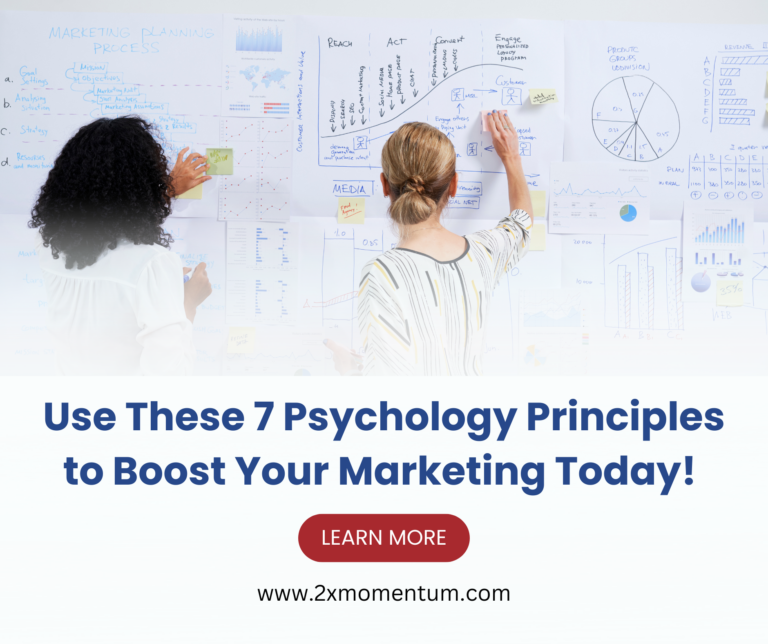People are predictable—to a certain extent. When we understand how the human brain works and the shortcuts it uses when making decisions, we can more easily guide customers to choose our products and services. Using this knowledge responsibly means helping good-fit customers choose a product that will genuinely benefit them.

So how do you get started? Well, here are seven concepts you can apply right away!
1: Social Proof
When people are unsure what they should do in any given situation, they tend to follow what others are doing. This is why social proof is an essential part of any digital marketing strategy! Every business should have testimonials or case studies on their website and social media. You might also encourage user-generated content or consider influencer marketing. For B2B companies, putting your biggest clients’ logos on your website can make conversions skyrocket.
2: Borrowed Equity
People make judgements about others based on what they know about their friends. This is true not just for individuals but also for organizations! If you partner with another company to launch a new product, that company’s loyal fans will likely see you in a positive light. If you sponsor an event for an aligned nonprofit, you’ll boost your reputation with their supporters.
3: Scarcity
When something is limited, it is perceived as more valuable. When a product is almost sold out or a sale is almost over, it creates a sense of urgency for customers. People know they have to act quickly if they want the product! So, when something you have is limited, it doesn’t hurt to let people know.
4: Reciprocity
People tend to respond to gestures—positive or negative—with similar gestures. Go the extra mile with customer service, and people might be motivated to write a positive review. Provide valuable free content, tools, and trials, and you’ll gain an edge over your competitors who haven’t provided those things.
5: Choice Architecture
Having too many choices can be overwhelming! Choice architecture presents a limited number of choices—three is often ideal—to make things simple. You can use this on your website by putting three choices “above the fold” (the part of a webpage you can see without scrolling) with the other choices below the fold. This lets people really focus on those first choices.
6: Anchoring
People tend to use the first piece of information they get as their reference point, or anchor. If a restaurant lists a $120 per bottle of wine first on their wine list, their $60-$80 bottles will look reasonable in comparison. Having a higher-priced option as an anchor can really increase sales of your bread-and-butter options!
7: The Mere Exposure Effect
Psychology tells us that people prefer what they’re familiar with. While conversions are very important, don’t overlook the value of reach in your social media metrics. Building brand awareness is an essential long-term investment. Being consistent with your branding and your messaging is key. We recommend putting together a brand guide to help with this!
Looking for Help?
As an experienced marketing agency, 2XM knows how you can use psychology to reach more customers and achieve your business goals. If you’d like help putting these marketing psychology principles into place, we would love to work with you. Contact us for a FREE 60 minute consultation today.
